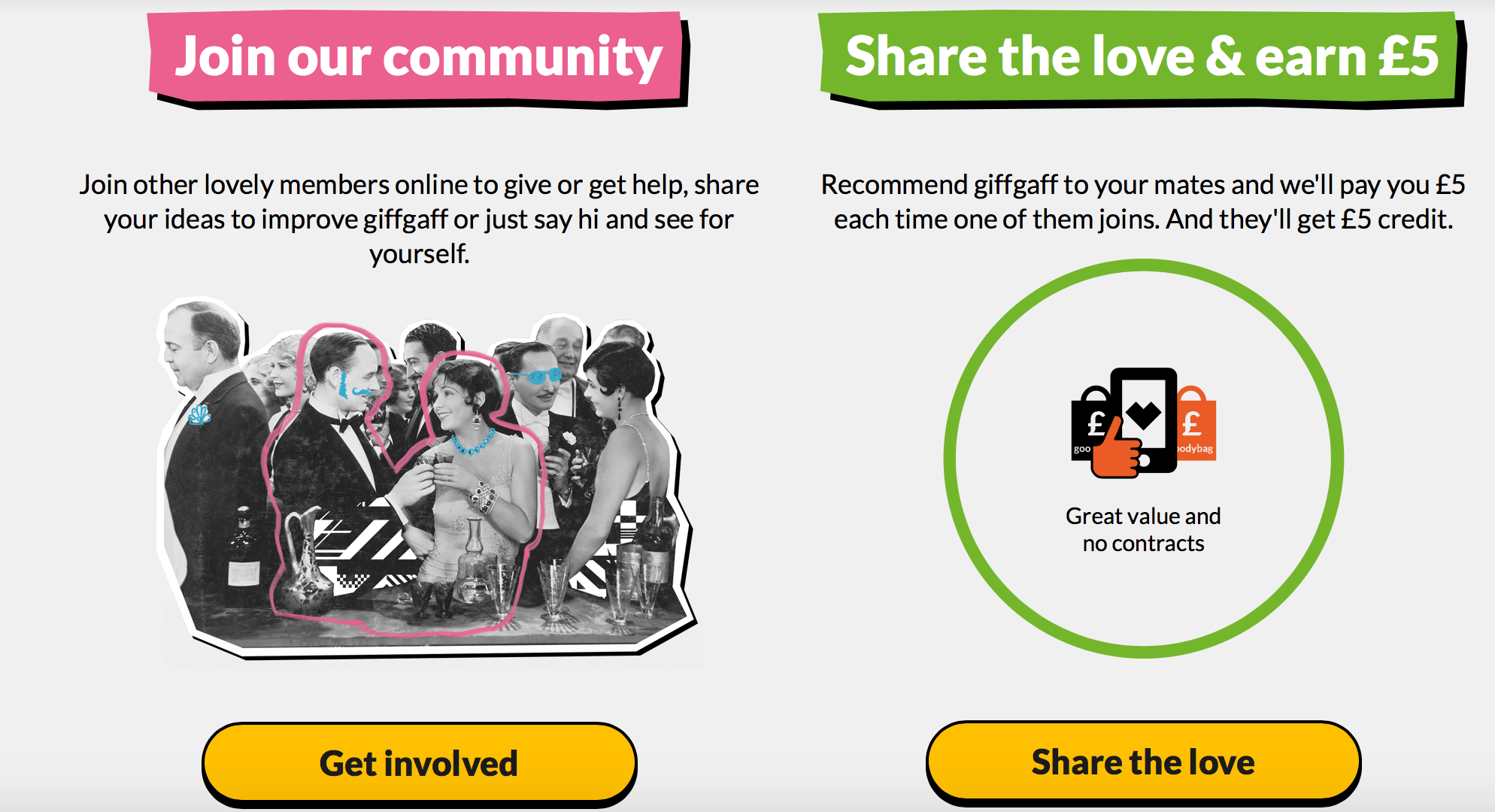Giffgaff: the ‘mobile network run by you’

Launched as an experiment in 2009, Giffgaff is now the third largest mobile virtual network operator in the UK (just behind Virgin Mobile and Tesco Mobile), but the only one run by its own customers. Some have believed it is a ‘bonkers’ mobile network, but it has survived and grown to £210 million revenue already in 2015
Giffgaff is the only mobile virtual network operator (MVNO) in the UK, that is run by its customers. It is called MVNO because it doesn’t have its own mobile network, but rather uses that of O2 – one of the largest operators in UK. The company was launched in 2009 as an experiment that started in the innovation department of O2 itself. It sought to capture a lower-income, younger niche of the market, offering the sim cards for average of £10 (3 times cheaper than the standard large mobile operators would offer).
Giffgaff is a great example of crowd-sourcing based business. It doesn’t have a call center, nor does it have the standard network infrastructure that it needs to maintain and upgrade. It outsources the network from O2 and its customer service from …. erm, its customers. Its business model exists thanks to its community: members help each other with any questions (and earn points if they do), are motivated to recruit new members (for a modest check of £5) and share ideas and strategies that help Giffgaff grow. By 2015, 14,000 ideas were shared in the community and the company had implemented 10% of them.
Value creation
Giffgaff overtook 160 other mobile networks by focusing on the lowest prices, no contracts, and great customer treatment. It offers both packages with the handsets from the major brands in monthly installments as well as SIM-cards only. You can even sell your old phone or buy a used one at the Giffgagg marketplace.
It provides the community that no other mobile operator has, and speaks to mobile-savvy customer, that would like to engage in more advanced conversations. Not only it builds a social element around its services, but it also engages with its customers having their interest in mind: each month, Giffgaff would get back to you with some recommendations about how to save money with various packages and how to earn money by helping other members with their inquiries.
On the other hand, Giffgaff is a brilliant example of how O2 managed to launch an alternative service targeting a new market segment without harming its core business. By launching the experiment under the different name and keeping its operations independent, it substantially reduced the reputational risk and the risk of failure for the O2 brand itself.
Value capturing
The key idea behind MVNO is that it can compete with large players thanks to it asset-light model. There is no hefty fixed cost related to labor-heavy customer service (call center), physical stores or infrastructure development. Most of the customer service is carried out by the members themselves, while Giffgaff has a small pool of its ‘online agents’ that will deal with the questions no one else can help with). Members receive points for their help, which can be cashed twice a year, motivating long-term relationships.
As Giffgaff’s CEO Mike Fairman said in the interview himself, “I’m amazed that it worked. “When we started, we were worried about the fact that we were a mobile phone operator that didn’t have a call center, it all sounded a bit bonkers.”
Another important aspect of value capturing is upgrading its loyal members to more expensive packages (or goodybags, as they are called) as the client base grows: Giffgaff offers a range of packages from £5 to £20, still just under rates of O2 to avoid cannibalization.

Watch outs
Customer service, especially for the smaller mobile operators, should remain one of the key priorities. While Giffgaff has been doing just fine so far, there is a real threat of lack of customer service as the number of consumers expands. Relying on its consumers means that not many of them will want to answer community questions during the weekends, but also, there is no guarantee to how many hours each member is willing to commit to. Additionally, if not marketed properly, the community element of the business can become less prominent, leading to recruitment of very different customer (purely low cost driven) with no interest of being an active member of community. In short, Giffgaff needs to keep an increasing care of its growing community and ensure they join for the right reason.
- https://www.giffgaff.com
- https://www.cable.co.uk/guides/is-giffgaff-mobile-any-good/
- https://www.telegraph.co.uk/finance/newsbysector/mediatechnologyandtelecoms/telecoms/11630738/Giffgaff-the-bonkers-mobile-network-proves-that-the-crowd-can-run-your-business-for-you.html
- https://community.giffgaff.com/t5/Welcome-Join/What-is-giffgaff-And-why-YOU-should-join/td-p/2633299
- https://www.figarodigital.co.uk/case-study/giffgaff/



Awesome post, thanks for sharing! The thing that scares me is the line where you mentioned they don’t have a call center. I’ve used postmates a lot for food delivery, and whenever there’s an issue I hate that there’s no way to get someone on the phone and have a quick conversation. Instead you have to communicate over email, which has a muuuuuuuch slower response time and which ends up taking so many more interactions to get to the same end result. I can only imagine that with a service like a mobile network, the frustration with not being able to talk to a live human would be even more frustrating.